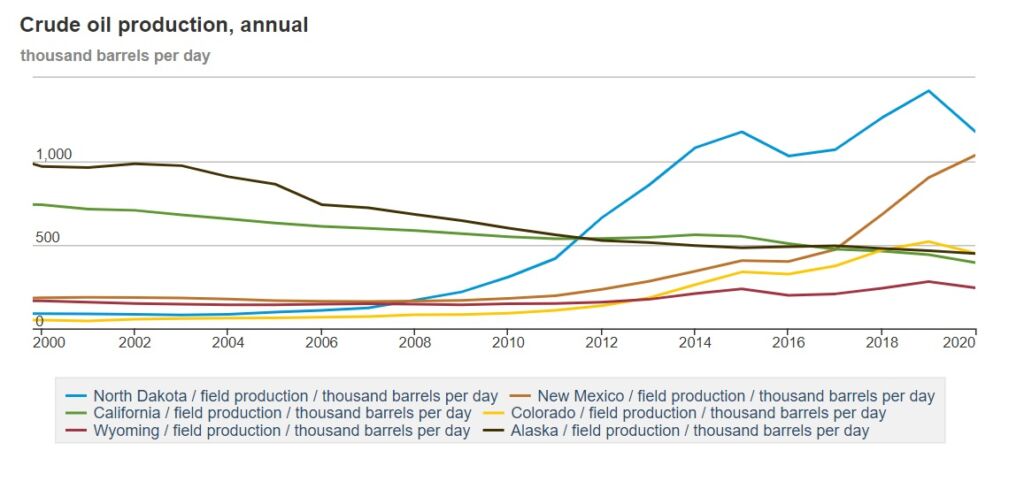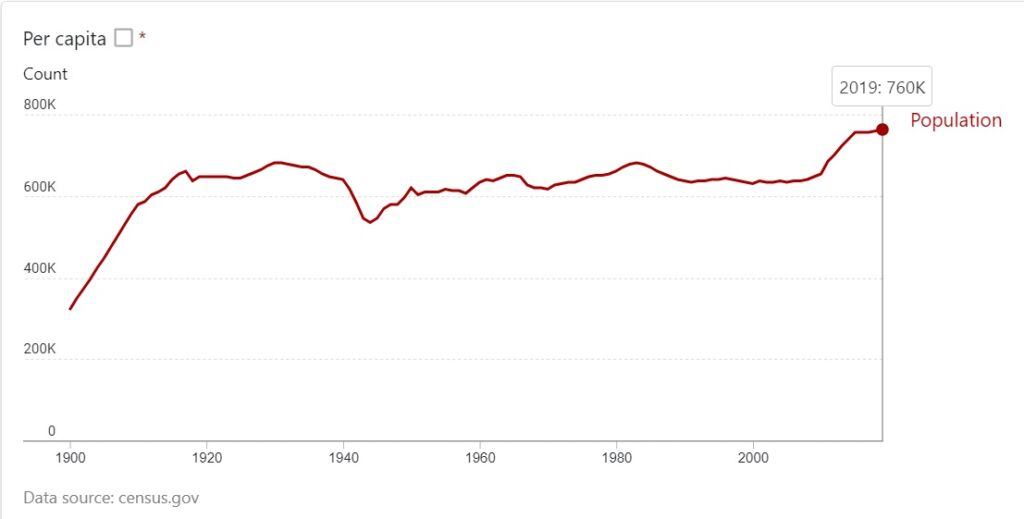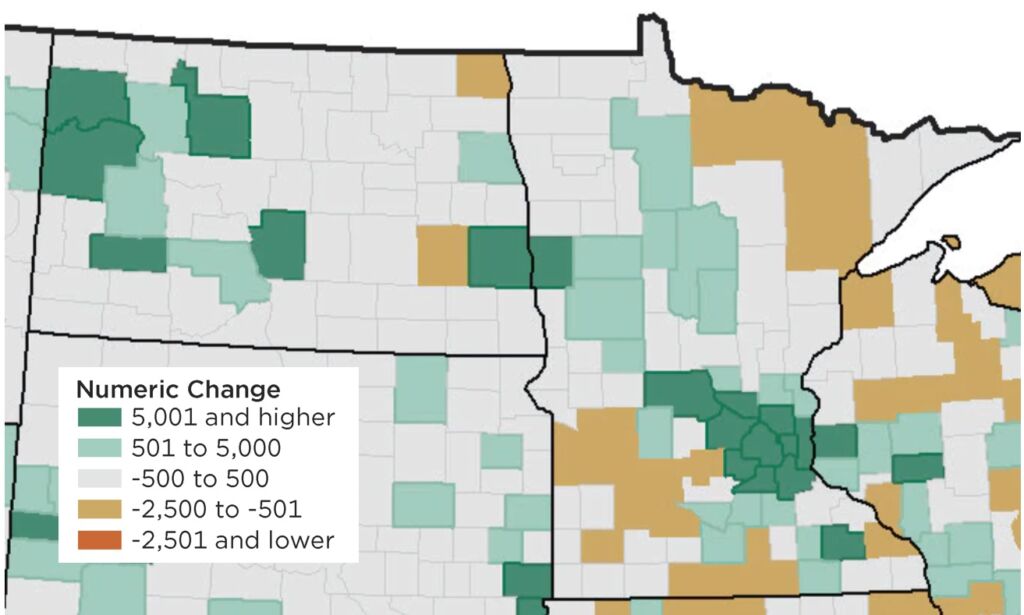Goldman Sachs: ‘Copper is the new oil.’ Will Minnesota be the next North Dakota?
A new report by Goldman Sachs makes a bold claim: copper is the new oil. If this is true, it means Minnesota, which has some of the largest undeveloped copper deposits in the world, could be the next North Dakota, reaping massive dividends from the responsible development of its natural resources.
The Bakken Oil Boom
It was about ten years ago when North Dakota began to experience an oil boom due to new technologies that allowed drillers to unlock oil and natural gas deposits that were previously uneconomic to develop. In just a few years, North Dakota went from producing very little oil and natural gas to being the second-largest producer in the country.

The graph above tells a history of oil production in North Dakota. The fracking revolution began to take shape in 2006. By 2009, North Dakota had become the fourth-largest oil-producing state, and before 2012, North Dakota had become the second-largest oil producer in the country. Texas, the largest oil producer, is excluded from the chart to allow for greater visibility on the y axis.
North Dakota’s oil boom brought with it a sharp rise in population growth. In fact, the state’s population grew from 640,000 residents in 2006 to 760,000 in 2019.

The growth is fueled by a growing population in the Fargo-Moorhead area, and an increasing number of people in the six counties in Western North Dakota that are closest to the oil Bakken oil patch.

Minnesota’s Mineral Deposits
As American Experiment has written about in the past, Minnesota is home to some of the largest undeveloped deposits of copper, nickel, cobalt, and other essential minerals in the world. In fact, Minnesota’s mineral deposits are so massive that they constitute 34 percent of the copper reserves in the entire United States.

In 2020, Arizona was the leading copper-producing state and accounted for an estimated 74 percent of domestic output, followed by, in descending order, Utah, New Mexico, Nevada, Montana, Michigan, and Missouri, according to the United States Geological Survey (USGS). This means Arizona mines produced approximately 888,000 metric tons of copper in 2020.
The Goldman Sachs report expects copper prices to soar from around $9,000 per ton today ($4.50 per pound) to around $15,000 per ton ($7.5 per pound) by 2025. If prices rise to this degree, Minnesota stands to reap massive economic benefits from responsibly developing its copper resources- if it is allowed to do so.
Unlike North Dakota, where energy companies were free to boom, Minnesota lawmakers are seeking to restrain the industry, rather than facilitate it.
This is a mistake because our research has found that developing Minnesota’s copper, nickel, cobalt, and titanium deposits could create up to 14,850 new jobs in Minnesota and add more than a billion dollars in labor income for the state.

What’s more, these numbers do not include the updated resource estimates at the Tamarack deposit, which means the impact of developing these resources could be even bigger.
Minnesota has the resources to experience a significant economic uptick from natural resource development. The main question is, will Minnesotans be allowed to experience it?